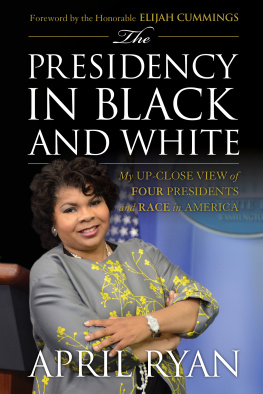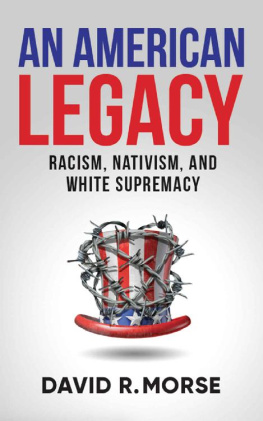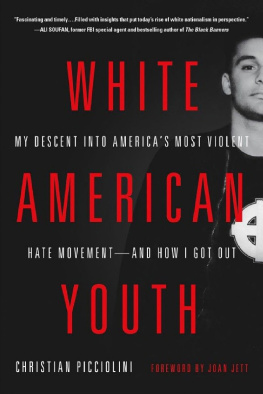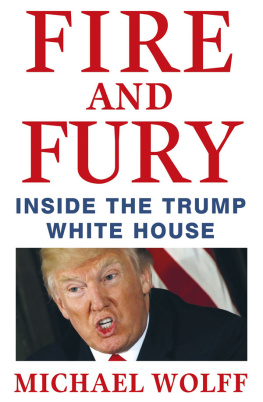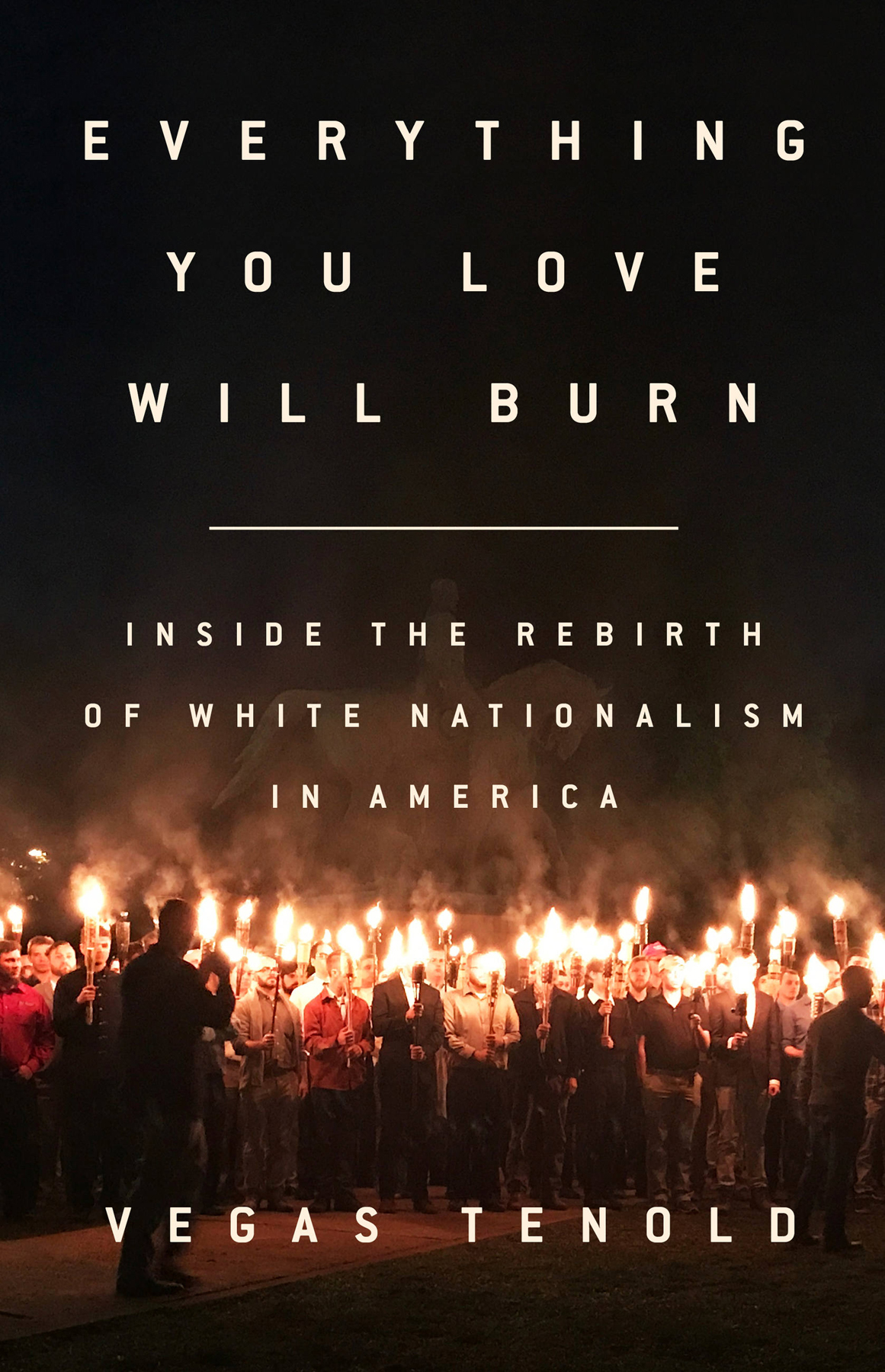Copyright 2018 by Vegas Tenold
All images Vegas Tenold
Hachette Book Group supports the right to free expression and the value of copyright. The purpose of copyright is to encourage writers and artists to produce the creative works that enrich our culture.
The scanning, uploading, and distribution of this book without permission is a theft of the authors intellectual property. If you would like permission to use material from the book (other than for review purposes), please contact permissions@hbgusa.com. Thank you for your support of the authors rights.
Nation Books
116 East 16th Street, 8th Floor, New York, NY 10003
http://www.publicaffairsbooks.com/nation-books
@NationBooks
First Edition: February 2018
Published by Nation Books, an imprint of Perseus Books, LLC, a subsidiary of Hachette Book Group, Inc.
Nation Books is a co-publishing venture of the Nation Institute and Perseus Books.
The Hachette Speakers Bureau provides a wide range of authors for speaking events.
To find out more, go to www.hachettespeakersbureau.com or call (866) 376-6591.
The publisher is not responsible for websites (or their content) that are not owned by the publisher.
Editorial production by Christine Marra, Marrathon Production Services. www.marrathoneditorial.org
Book design by Jane Raese
Set in 10.25-point LinoLetter
Library of Congress Cataloging-in-Publication Data has been applied for.
ISBN 978-1-56858-994-7 (hardcover)
ISBN 978-1-56858-995-4 (e-book)
E3-20180103-JV-NF
For H & L
As I write this, nineteen people are being treated at University of Virginia Medical Center for injuries sustained when a white supremacist drove his car into a crowd on the streets of Charlottesville, Virginia. One woman is dead. The victims were struck as they protested one of the largest gatherings of right-wing radicals in America in recent history. Last night I watched hundreds of predominantly young, white men march in a torchlight parade, paying tribute to a history that produced slavery, Jim Crow, and a society that still discriminates against its minorities in a million ways, large and small. They were not only paying tribute to white hegemony but also protesting the cracks in that hegemony, airing grievances that seemed both petty and fabricated. As they marched en masse to chants of Jews will not replace us! I had to wonder exactly how Jews were replacing them and how these young, white menby any statistical measure perched at the top of the societal food chainhad come to feel so deeply aggrieved as to see the worlds progress as an attack on them.
Ive tried to write a book that explains the resurgence of right-wing radical groups that, as of this moment, seem only to be growing more confident and exuberant by the day. This is a book about the people who, for various reasons, have come to hold opinions and beliefs that most of us find abhorrent. It is not primarily about what is known as the alt-right, the anonymous, internet-dwelling trolls who rose to fame during the 2016 presidential campaign; instead, its about those who march in the streets, whose beliefs are rooted in the flotsam of decades of American racism, anti-Semitism, and white supremacy. In writing this book I have attempted to step aside and present as unvarnished a look into the lives of those on the radical right as I can.
It should be stated that Im not a neutral observer. In many ways I represent what my subjects believe to be the enemy. As long as Ive been able to vote Ive voted socialist (in my native Norway that is still, thankfully, a viable option), and Ive made no secret about that in my reporting. Still, Ive tried to approach the subjects of this book without bias, and Im grateful for the way they have, in large part, returned the favor.
The main characters in this book, including Matthew Heimbach of the Traditionalist Workers Party, Jeff Schoep of the National Socialist Movement, and Dan Elmquist of the KKK, represent three contemporary yet disparate approaches to American white nationalism. Respectively, they represent a modern, more pragmatic strain, a European National Socialist strain, and a profoundly American strain. Taken together they are a cross-section of white nationalism in America today, but there are otherssome who are mentioned in this book and some who are notwho are also part of the tapestry. This book was never meant to be an exhaustive account of everything that stirs on the far right. There are othersthe writer Leonard Zeskind, for onewho have already done that admirably.
There were many parts of this book I found difficult write, and there are parts that may be difficult to read. Its safe to say that this book contains slurs, racial and otherwise, and I debated at some length whether to include them. In the end I decided to keep any offensive quotes untouched because the words people choose matter. It is not my place to take offense on behalf of others, nor would I want to make the opinions and statements presented by the subjects any more or less offensive than they are.
This book also contains scenes of violence. Some of these events were reported to the police; others werent. There were instances during the reporting for this book when I witnessed extreme violence and did nothing to stop it. I believe that for my own safety and for the safety of those with me at the time I had no other choice.
For that reason some names in this book have been altered. The social cost of being active in white nationalist or supremacist groups can be considerable, and for those who werent prepared to participate with their full names, I made allowances. I pushed back against most requests for anonymity and afforded it only to those whose jobs and personal safety would be affected. Most names remain intact.
The reporting for this book always took place with the full knowledge and consent of my subjects. I never concealed who I was or presented myself as anything but a journalist. For the very few scenes in the book where I wasnt present, I have relied on firsthand witness accounts, which I have corroborated as far as possible. Descriptions of inner monologues are based on extensive interviews. Descriptions of events that took place before my time are based on the reporting and research of others.
For terminology I have tried to keep things as orderly as I could. The white nationalist movement is awash with different terms for seemingly similar beliefs, and figuring out what to call the different factions and ideologies is a daunting affair. There are those who believe that everyone on the radical right, from the so-called alt-right to the skinheads, should be called Nazis, and it is a point well taken. They all show an affinity for the words and teachings of Adolf Hitler, so calling them all neo-Nazis makes sense. However, the terms Nazi or neo-Nazi refer, specifically, to National Socialists, and because there is a distinct faction within the far right that identifies as National Socialist, using the terms Nazi, neo-Nazi, or National Socialist as a catch-all term becomes problematic because it makes it impossible to describe the actual Nazis in the movement.
White supremacist is similarly problematic because it assumes that everyone in the movement believes the white race is superior to others. Although there certainly is a large contingent of those who believe in the inferiority of any race that isnt white, there are also those who dont, so labeling everyone white supremacists becomes an oversimplification.
I have chosen, then, to use the terms



